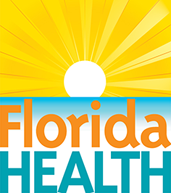It's a New Day in Public Health.
The Florida Department of Health works to protect, promote, and improve the health of all people in Florida through integrated state, county, and community efforts.
Hanson's Disease (Leprosy)
Florida Health
Disease Control- DiseaseControl@flhealth.gov
- 850-245-4444
-
Florida Health
4052 Bald Cypress Way
Tallahassee, FL 32399
Hansen's disease, also known as leprosy, is caused by the slow growing bacteria Mycobacterium leprae and rarely M. lepromatosis. The disease primarily affects the skin, nerves and mucous membranes (i.e., lining inside the nose). Most people (about 95%) have natural immunity to Hansen’s disease. Untreated patients with M. leprae in the upper respiratory tract are thought to be the main source of infection. Transmission requires prolonged close contact with someone known to be infected and not treated. Research has shown that infected nine-banded armadillos may also be an uncommon source of infection. Diagnosis is made by taking a small skin sample (a biopsy) and evaluating it under a microscope. Effective antibiotic treatment is available for patients diagnosed with Hansen’s disease. Shortly after treatment is started, Hansen’s disease patients are no longer infectious. Some research suggests that M. leprae may survive temporarily in soil. Wearing gloves while working with soil is a simple precaution that helps protect against cuts and getting soil into wounds.



Connect with DOH